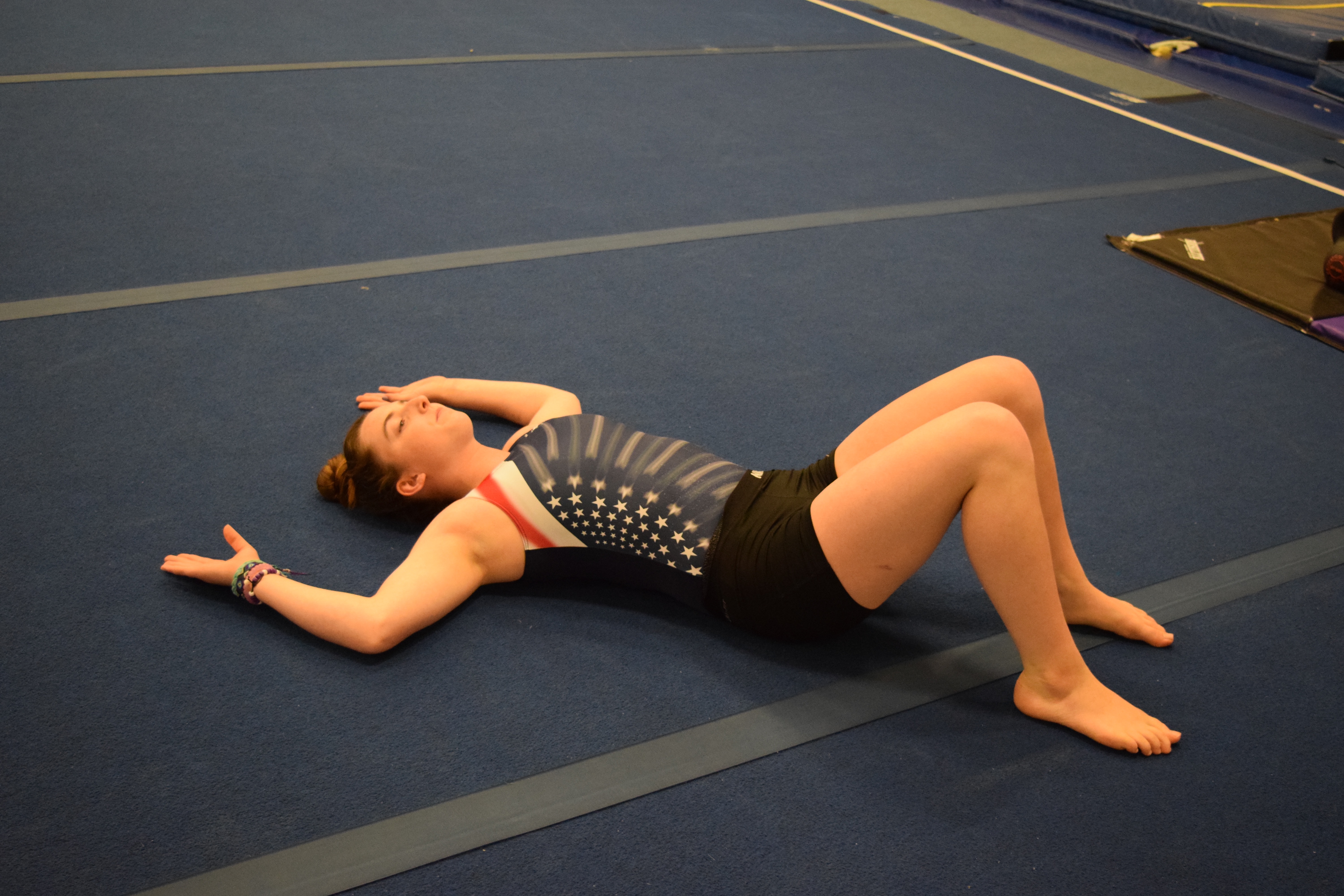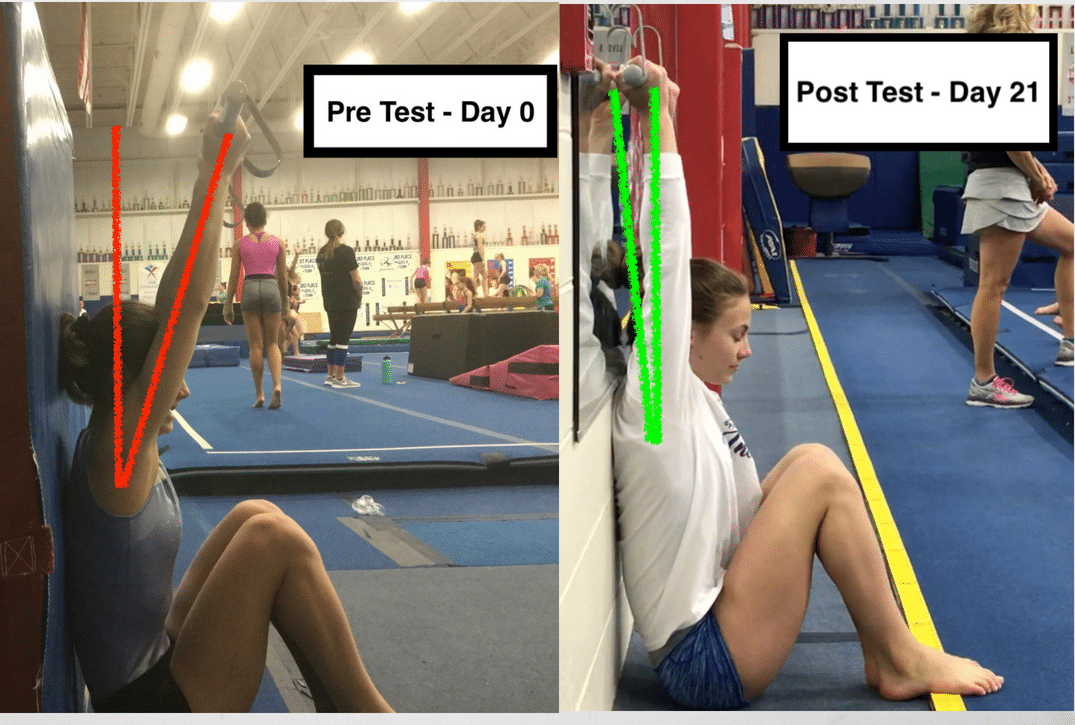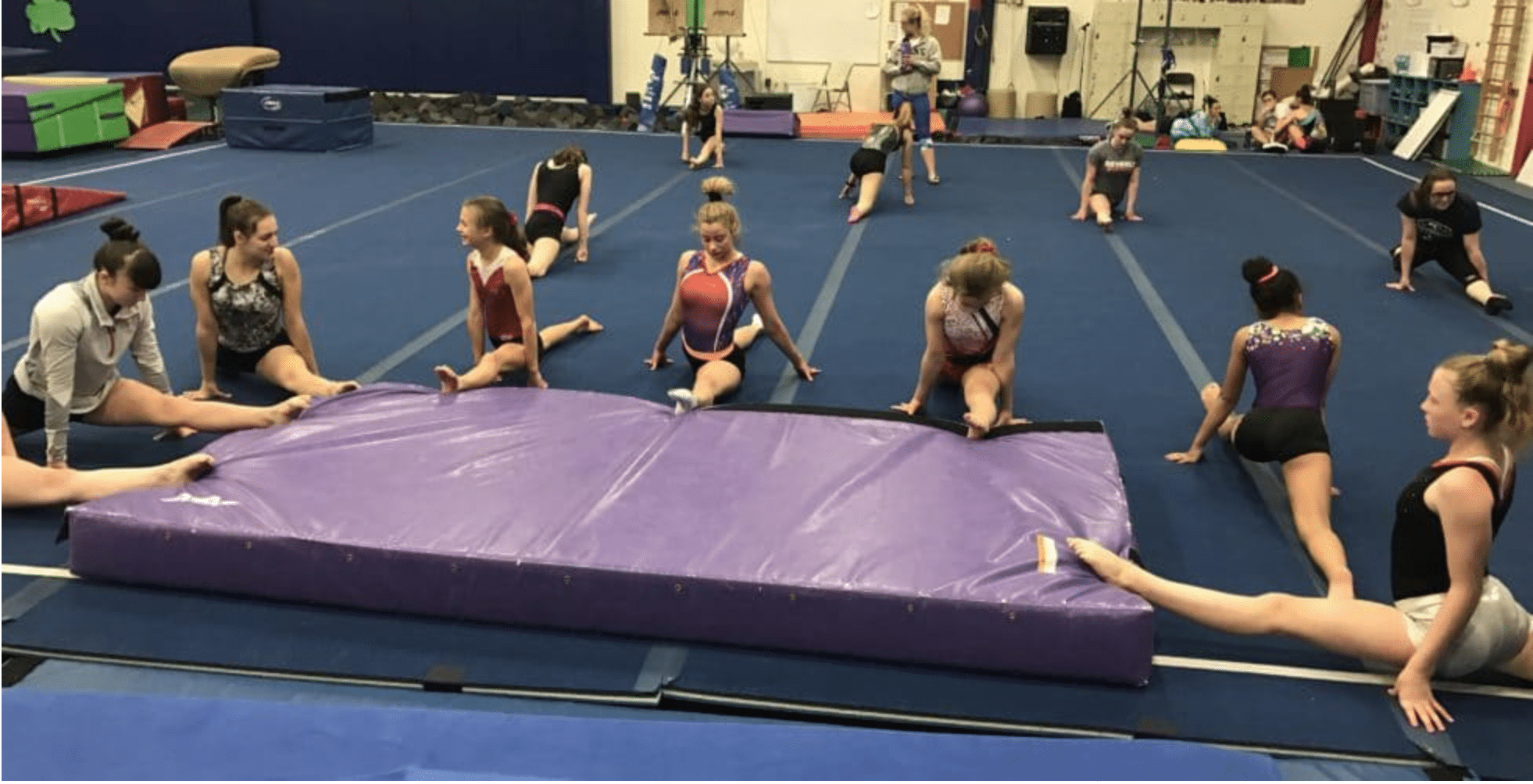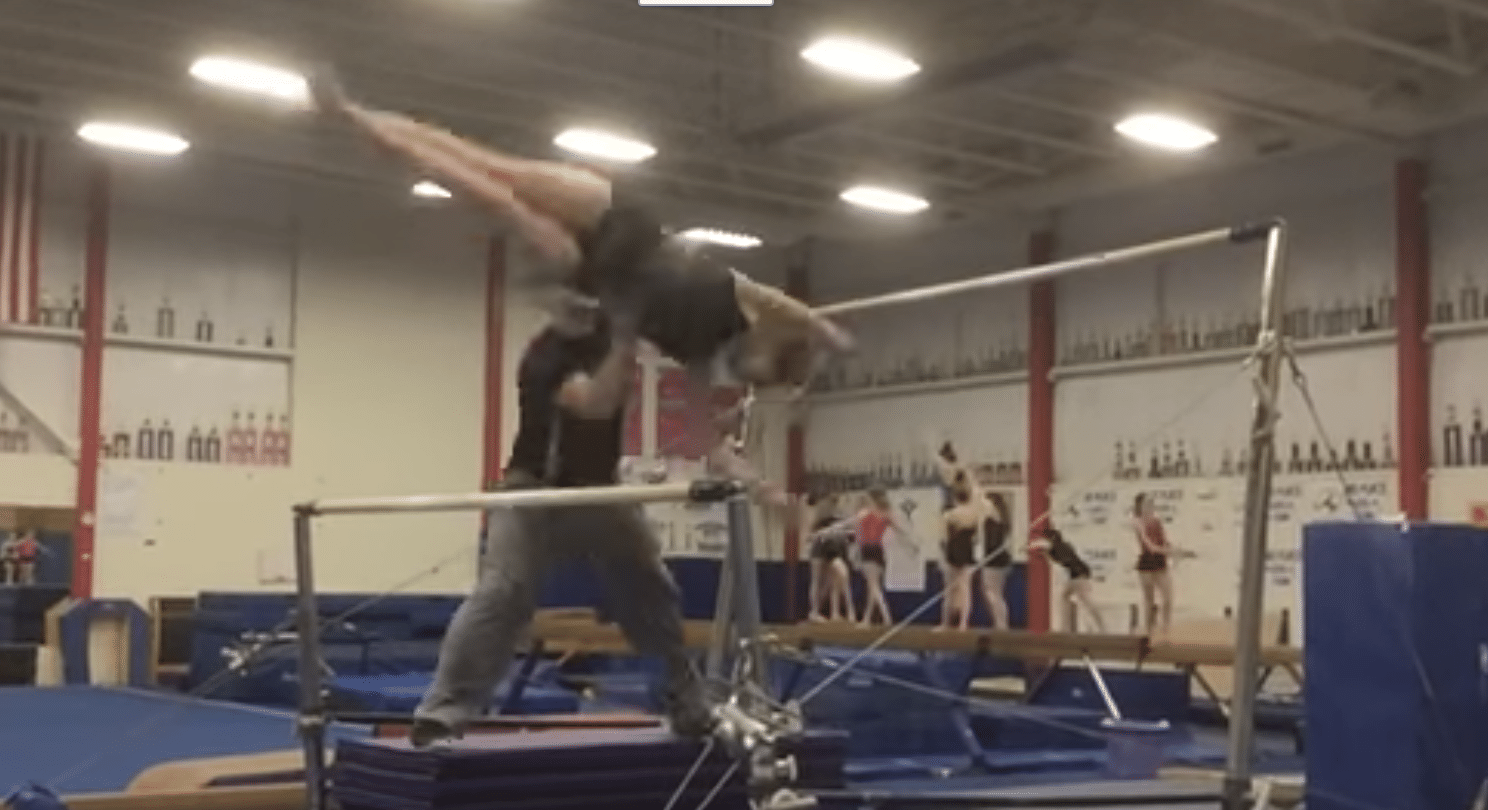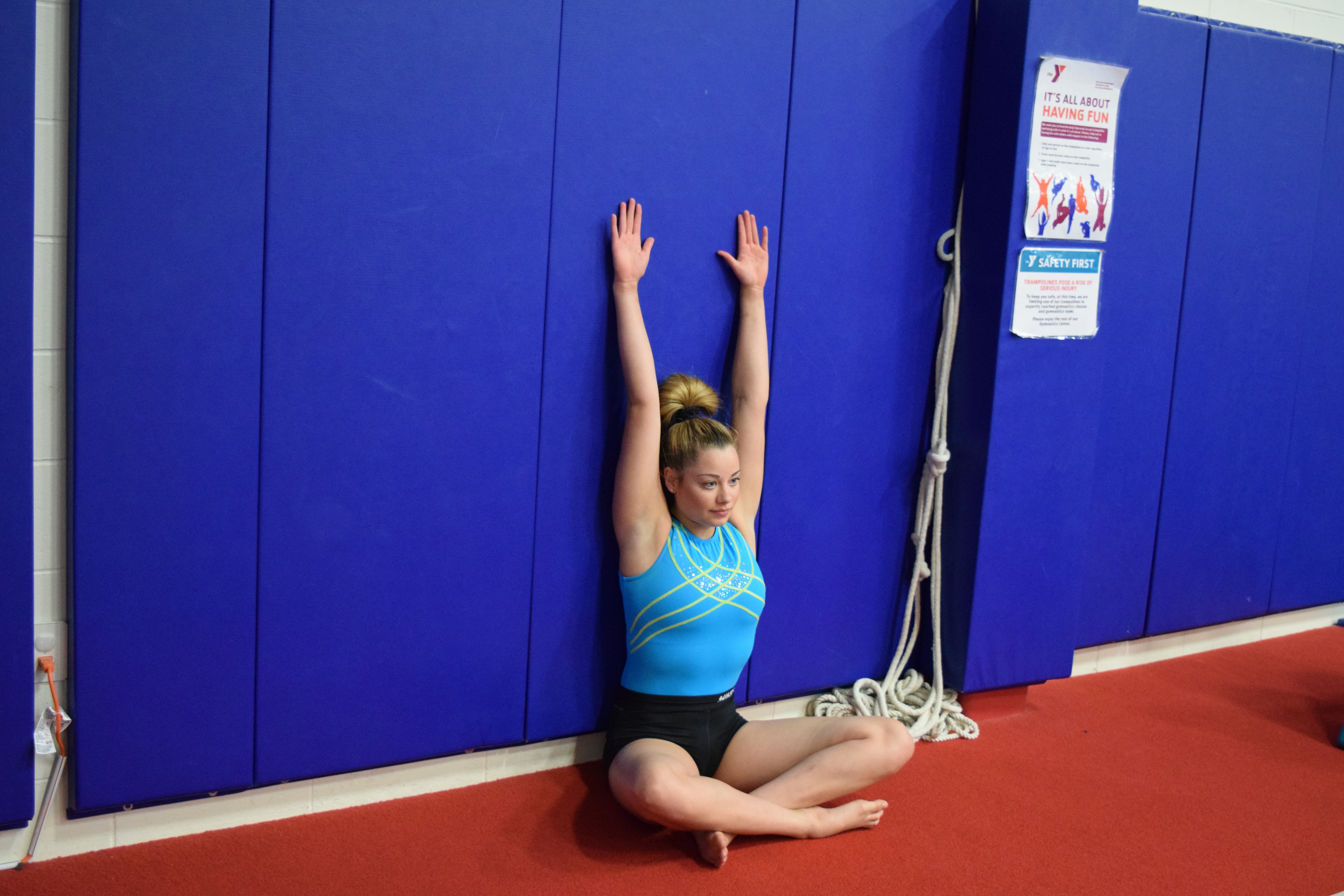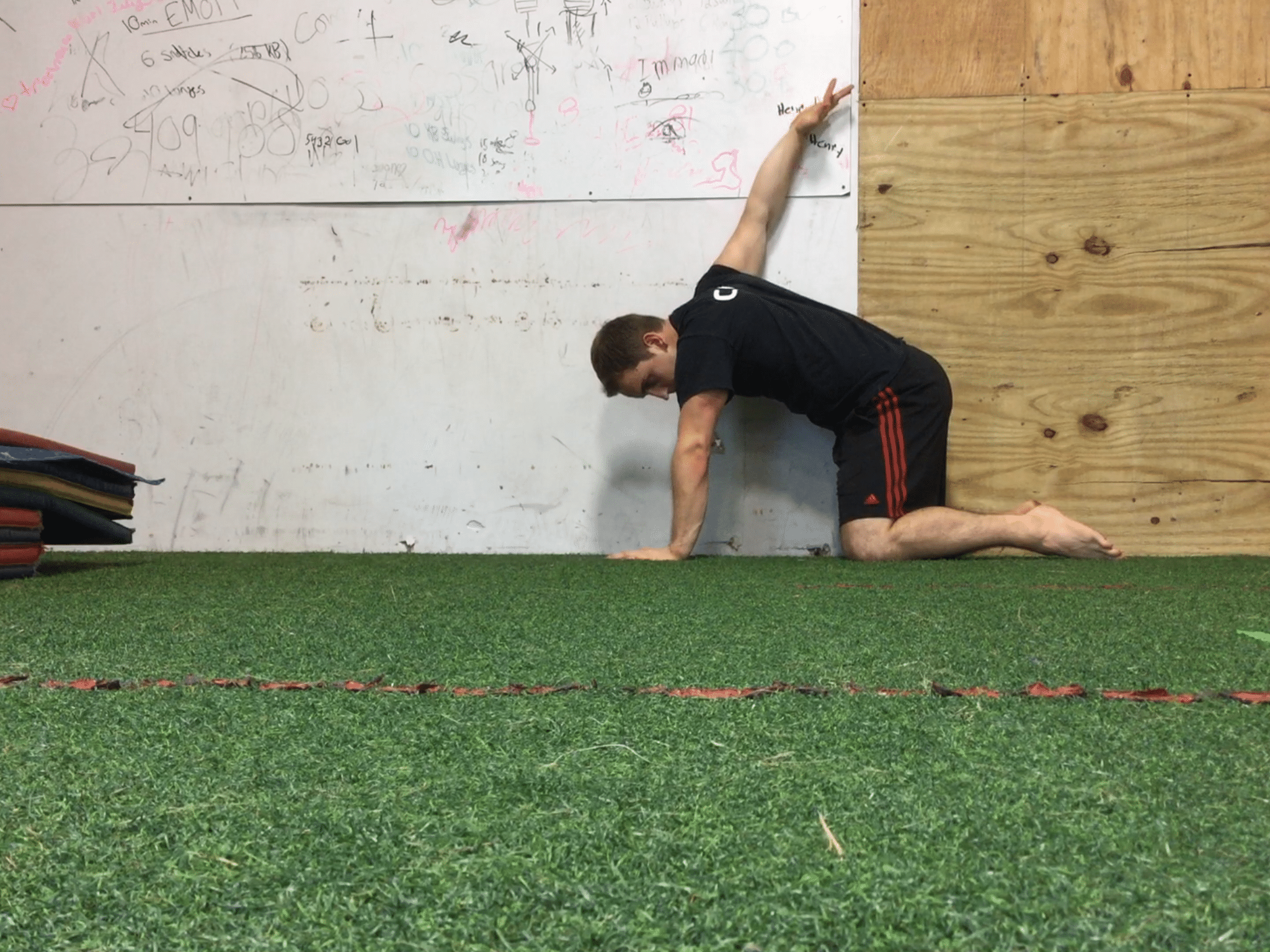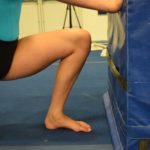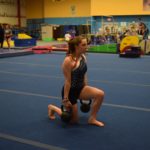Are Dips and “Skin The Cat” Type Stretches Dangerous For Female Gymnasts?
I’ve been brewing on this topic for over a year now, originally sparked one of Eric Cressey’s articles on the possible dangers of using dips with baseball players. Reading that article and some other literature made me start to scratch my head as to why many female gymnasts do a ton of dip work for strength and also aggressively stretch into “skin the cat” type motions (hyper extension). For many gymnasts/coaches, I know these two things may be staples in their daily routines. Honestly, I used to be in the same mindset cranking away on shoulders in that direction and doing high rep dips each week for strength. After learning/reading more and thinking critically about the topic, I have pretty much removed dips and aggressive hyper extension type stretching for my female gymnasts in the last year or so.
If you want to learn about exactly how I approach shoulder flexibility, the exercises I use, and the circuits that I find most useful, you can downlaod them here for free
Download My New Free
10 Minute Gymnastics Flexibility Circuits
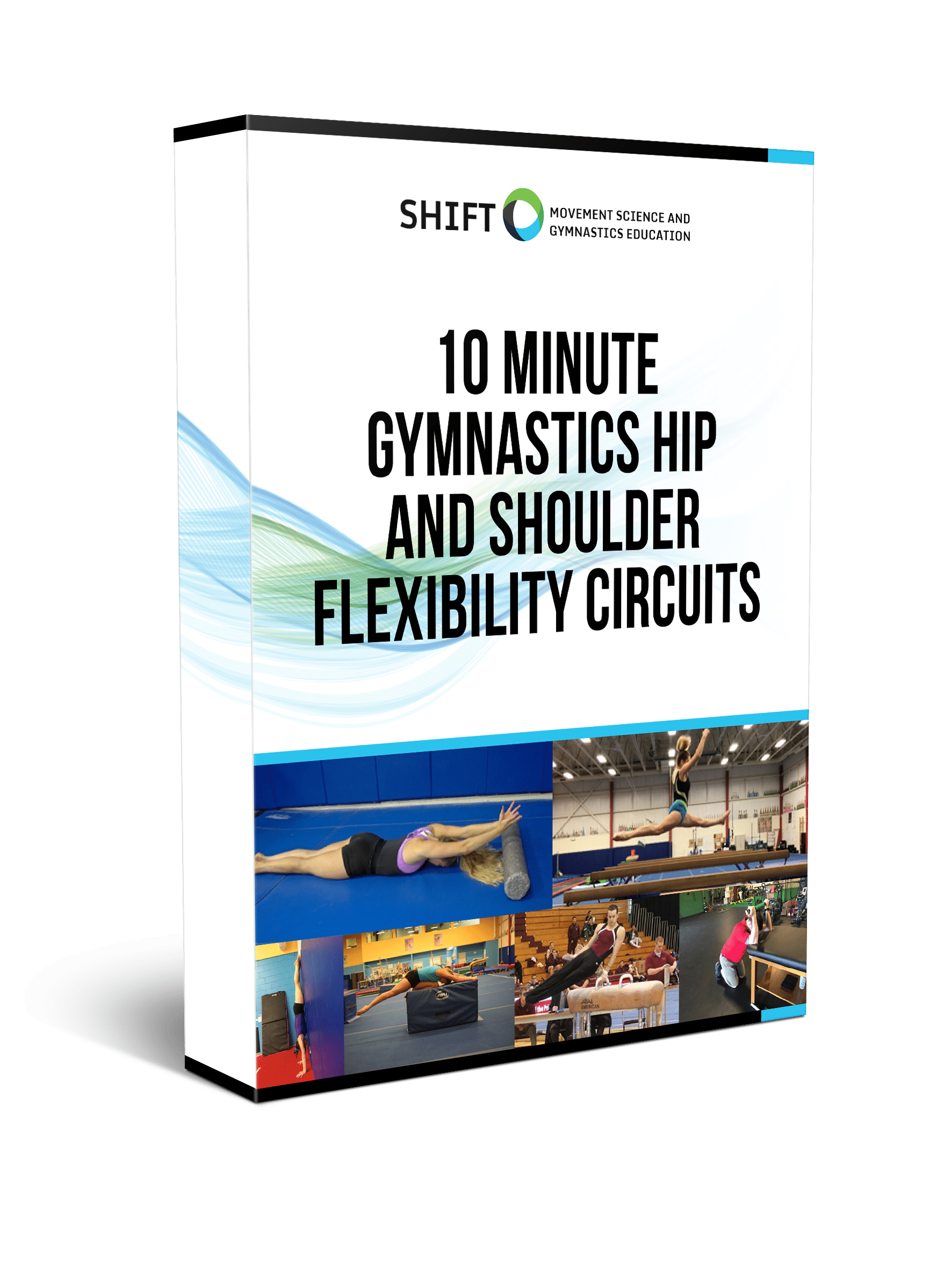
- 4 full hip and shoulder circuits in PDF
- Front splits, straddle splits, handstands and pommel horse/parallel bar flexibility
- Downloadable checklists to use at practice
- Exercise videos for every drill included
I even touched on this topic over overhead “flexibility” for an article earlier this year you can read here. Before readers start the email bombs, here’s some explanation for my rationale.
1. Potential Danger of Over Stretching Already Hypermobile Shoulder Structures
This is really the biggest reason I’ve drifted away from dips and extreme hyper extension shoulder stretches. Many gymnasts already have very mobile shoulders that have excessive motion. This may be due to their inherent genetics/body type, or may have been acquired through gymnastics training. It doesn’t mean it will always cause a problem, but it can quickly lead to instability and possible damage with such a demanding shoulder sport like gymnastics.
Even beyond this, many gymnasts develop excessive mobility in the structures on the front of the shoulder. This may create a shoulder that may sit forward/up in the joint rather than be balanced in the middle at an ideal position. It’s much more common than you think, and many gymnasts display this posture type of rounded/closed shoulders that seem to pop forward. I had one of our girls show this on a modified dip drill just for an example. Notice how her shoulder really pops out in front during this hyper extension motion.
This may come about due to chronic postural changes, overdeveloped anterior chest structures, mobility and/or strength imbalances, poor scapular control, gymnastics being a very “hollow” or flexion position based sport, poor technique with compensation, and more. It takes a detailed movement and shoulder exam to get to the root cause.
With all of that being said, I think doing dip type exercises and also cranking a gymnasts shoulder into hyper extension may be further contributing to this issue and also may be dangerous. It makes me nervous that these gymnasts are getting stretched which may be creating more gain more laxity and increases in possibly dangerous instability. I get concerned with what is happening to those same gymnast’s shoulders when they get aggressively stretched in warm up and then grip up to swing bars when research has suggested the forces during bars may be up to 4x body weight. Along with this, I think it’s really hard for many gymnasts to do high volume/high rep dips with proper form and safe shoulder positions, especially under fatigue and when they are younger.
I personally feel these gymnasts shouldn’t be getting more mobile, and are better off spending time with drills focused on controlling their extreme shoulder motion. I feel getting a good aligned (centrated) joint position, training dynamic stability, working coordination, and integrating shoulder stability into their entire upper body chain for gymnastics skills may be the better direction for both safety/performance.
‘
2. Lack of Carry Over/Need For During (Women’s) Gymnastics Skills
I always try to play devils advocate between the Physical Therapist and the coaching sides of my viewpoint. I took a step back and thought about if these extreme ranges into the “skin the cat” type motions were needed for female gymnasts (more on the men’s gymnastics side below). I couldn’t really think of skills that this extreme mobility was needed for aside from gymnasts who train lots of in-bar/jam work, manna presses, or german type giants. People might think this “skin the cat” mobility (extension and external rotation) is needed for eagle/invert giants, but it’s actually the opposite (flexion and hyper internal rotation with elbow/wrist pronation). Front grip as for front giants does require external rotation and forearm supination, but again it’s in hyper flexion not hyper extension. The orientation of capsular, muscular, and ligamentous tissues in these different extremes of motion don’t automatically mean if you gain motion in one, you automatically have more safe motion all over. I could be missing some skills because I certainly haven’t memorized the FIG code.
After looking across all the other shoulder motions in female gymnastics skills, I couldn’t really find too many that I found a scientific, rational reason for why as a coach I would want to 1) gain more hyper extension mobility and 2) train/strengthen/stabilize this motion with lots of dips.
I think we may be feeding the fire for potential injury if we are gaining excessive mobility into ranges that we don’t necessarily need for gymnastics skills. I do see the need for gaining more overhead motion for gymnasts, as the sport requires quite a bit of that and I have written on this before. I think there are more effective, less shoulder sketchy ways to go about both the rationales for strengthening/stretching the shoulders of gymnasts. Which leads me to the next points.
3. I Think There Are Less Risky Ways To Strengthen / Stabilize The Arms and Chest
I think gymnastics started using a lot of dips with the rationale that it was a great way to strengthen chest and triceps muscles. Don’t get me wrong this is a good way to go about training these areas, if it’s needed for that person and performed correctly. Branching off the point above, I feel the chest and triceps are used for most women’s gymnastics skills during
- Pushing Motions or Stabilizing Arms In Front – Tsuk entry blocking, assisting casting motions, pushing down to block chest up on Yurchenko’s, etc.
- Assisting Downward Pressing or Stabilizing – upright support on bars/beam, pushing down and “shrugging” for bars
- Assisting Overhead Stability – helping control handstands, resisting opening of the shoulders like swinging down from giants, blocking with arms overhead
- Generating Twisting and Rotating Motions/Resisting Opening of The Arms (pulling arms into twist, assist in pull down motion like kips/turning over layouts, maintaining twist, resisting arms opening up across body etc)
They’re may be some more unique or specific skills that I’m overlooking, but I think a lot of that comes down to skill progressions and technique, rather than strength and conditioning. Some strength/stability alternatives that I use rather than dips are
- Conventional push up and variations, Plyometric push ups, push up position hops, incline push ups
- Push up slider crawls on hands/elbows, bear crawls, dynamic planks, etc (find some of these here)
- Sideways bar/beam walking or shrugging drills for depression strength
- Overhead drills either weight bearing for handstands or some of my own favorites like Turkish Get Ups and Overhead Carries
4. I Think There Are Less Risky Ways To Get Shoulder Mobility Than Hyper Extension Type Stretching
Similar to above, I think many people use the hyperextension type stretches to target the chest muscles. If that’s the case, I think the larger and smaller pec muscles may have some much better ways to go about mobilizing them. Light soft tissue work to the muscle bellies can help to reduce tone that may naturally come about through training and regular workouts.
Along with this there are some great ways to go about doing mobility drills to target the pecs. For the smaller pec minor, you want to focus on the shoulder blades being down turned out and tilting backwards on the rib cage. When done properly, one of my favorite ways is to work on it over a half foam roller.
Together they can be worked on in a drill in the corner with two walls, focusing on proper breathing, good shoulder blade position, and good form while not causing any pain/only sensation of stretch in the chest. The key with this is proper form and not letting the core turn off, along with not putting excessive stress on the shoulders.
Don’t get me wrong, there are about a hundred other good stretches that can go into here to work on chest mobility to increase motion. Just a few offered here.
Dips & Hyper Extension Mobility in Mens Gymnastics
I know many people will ask the “what about men’s gymnastics” area of this discussion, and I do think differently for that. First, I can tell you that I do agree with male gymnasts needing much more mobility/strength into hyper extension due to many of their skills requiring it. Tons of pommel work, muscle ups, transition strength like Azarians, inlocates/dislocates, dip cuts/dip swing/front uprises on p-bars, and high frequency in bars/jams/eagles all require strength/stability in this extreme range of motion. The list could go on way past this, and due to these skills being used all the time on multiple events I do feel it should be prioritized in male gymnastics.
Due to the amount of time and skill work in this area, I do think that dips should be part of men’s gymnastics strength routines. However, I do caution people how they go about it as research shows men’s gymnastics tend to have a much higher shoulder injuries. I think dips need to be approached cautiously, with good technique as a focus. Simply having a young gymnast hop up and bang out dips with terrible form, only to fail around or get stuck at the bottom is dangerous. I strongly suggest people use partner spots, banded assistance, or other modifications of the dip to progressively build up the strength/stability/motor control. Along those lines, I also suggest that some alternative mobility strategies be used in an attempt to not just blast away on hyper extension stretches as their only option.
Concluding Thoughts
I know this conversation could go on and dive down quite a rabbit hole, but I want to hold it here to not get more lengthy. Also, I know this isn’t a hard and fast concept and exceptions always exist. I can write up some more thoughts down the road if people are curious. As a side note, Eric Cressey and Mike Reinold’s work together is incredible stuff, and has really helped me wrap my head around shoulder concepts in gymnastics. I highly suggest people dive into it if they want to know more and some of the other thoughts on shoulder concepts from James Andrews, Kevin Wilk, Ben Kibler, and a ton of other great people. Check out this post of my last years continuing education list or the references links below to find some of their produces I have used to learn more about shoulders. Hope everyone liked this and it got them thinking. Take care,
Dave
References
- Caine D., et al. The Handbook of Sports Medicine In Gymnastics. First Edition. John Wiley and Sons, 2013;
- Reinold M., Wilk K: Treatment Of The Shoulder: Principles of Dynamic Stabilization DVD
- Wilk K., Arrigo CA., Andrews JR. Current Concepts: The Stabilizing Structures of The Glenohumeral Joint JOSPT 1997: 25(6)
- Reinold, M. Cressey, E. Functional Stability Training for the Upper Body; 2014
- Myers JB, Lephart SM. The role of the sensorimotor system in the athletic shoulder. J Athl Train 35(3):351-363, 2000.
- Andrews, J., Reinold, M., Wilk, K. The ATHLETE
 ’s Shoulder. Second EDITION
’s Shoulder. Second EDITION , 2009
, 2009 - Paine, R., Voight, M. The Role of The Scapula. IJSPT: 8(5): 617 – 629; 2013
- Manske R., et al. Current Concepts In Shoulder Examination of The Overhead Athlete. IJSPT Oct 2013; 8(5): 554 – 578
- Oscar E. Corrective EXERCISE
 Solutions to Common Hip and Shoulder Dysfunction. Lotus Publishing: California; 2012
Solutions to Common Hip and Shoulder Dysfunction. Lotus Publishing: California; 2012 - Andrews, J., Reinold, M., Wilk, K. Current Concepts in the Evaluation and Treatment of the Shoulder inOverhead Throwing ATHLETES
 , Part 2: Injury Prevention and Treatment. Sports Health: A Multidisciplinary Approach 2(2) 2010
, Part 2: Injury Prevention and Treatment. Sports Health: A Multidisciplinary Approach 2(2) 2010 - Cressey, E. http://www.ericcressey.com/baseball-strength-training-programs-dips and (http://www.ericcressey.com/)
- Mike Reinold’s Website (for reference) – (http://www.mikereinold.com/)


